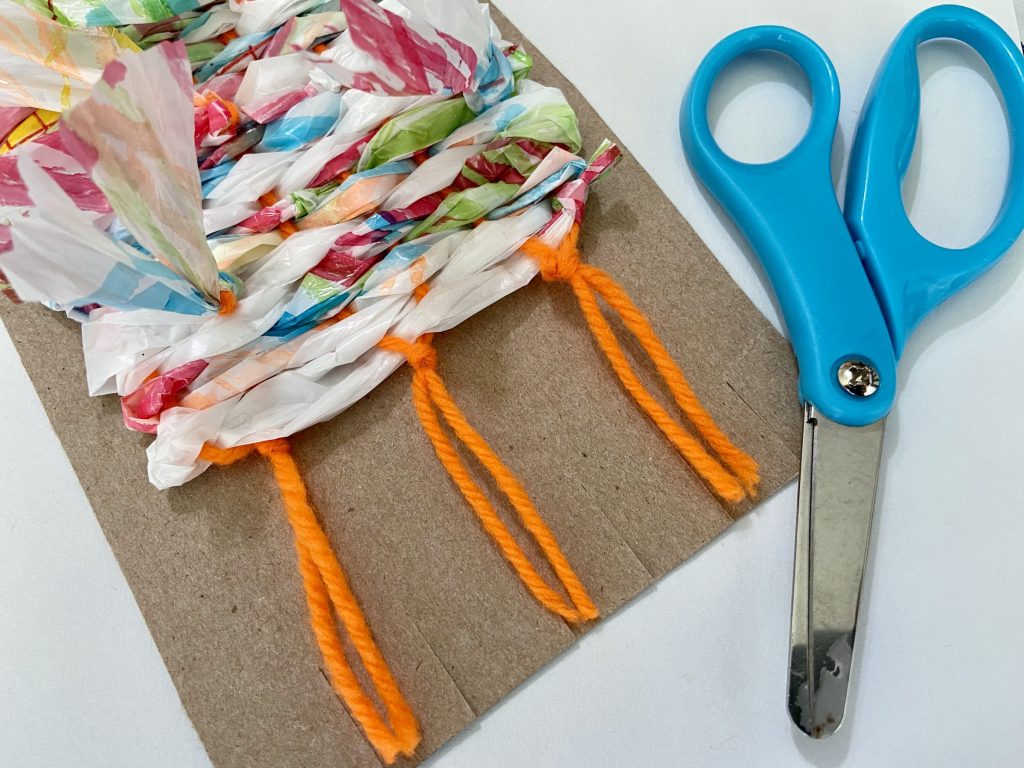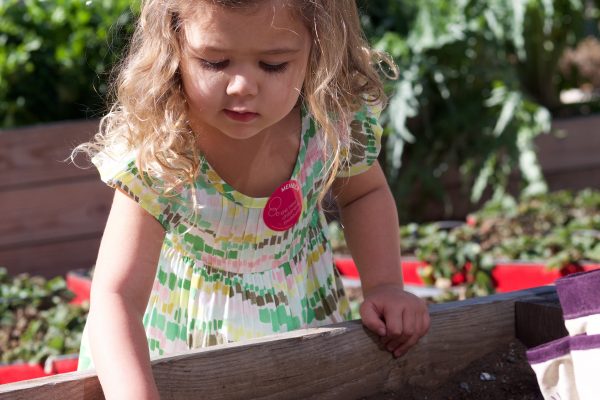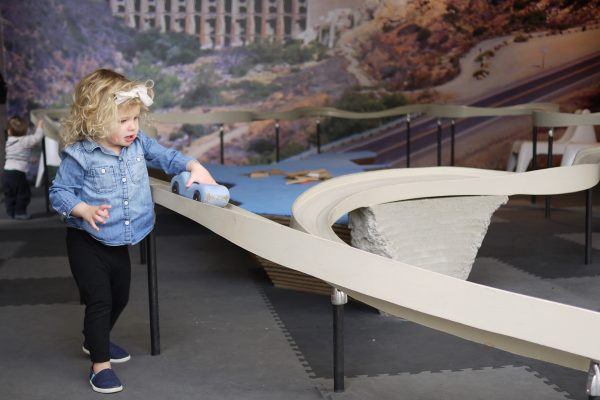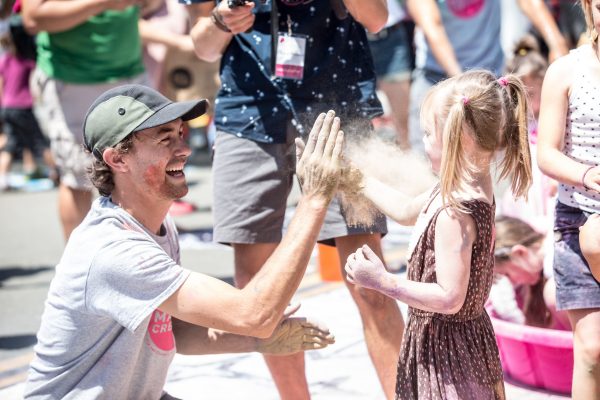STEAM Challenge: Upcycle plastic waste into art!
Plastic waste is a serious problem for our planet, but we can all make a difference by using less plastic and finding creative ways to re-use it. In our Celebrating Our Planet STEAM Challenge series in partnership with SDG&E, we challenge you to create a cardboard loom and use plarn to make an artistic weaving. Start by turning a plastic grocery bag into plarn (plastic yarn). Then use the materials to make a loom and weave the plarn through it!
Plarn Weaving Challenge Tutorial
GRADE: 3-6
SUPPLIES:
- Plastic grocery bag
- Pencil + scissors
- 3 – 4 colored permanent markers
- 5 x 8 in sheet of lightweight recycled cardboard (e.g. cereal box)
- Skein of yarn (or 1 yard found fiber)
- Plastic needle
- Roll of masking tape
How to make plarn
- Flatten your plastic grocery bag on a table.
- Cut off the handles and bottom seam.
- Use permanent markers to draw patches of color all over your bag on both sides.
- Fold the bag up from left to right.
- Measure and cut it into 16 evenly-sized pieces.
- Open the strips up and loop them through one another (best if done on a table). Gently tug on both sides until the strips knot in the middle.
- Connect all of your strips.
- Roll your plarn into a ball or around cardboard.
How to make a weaving
Now that you’ve made your plarn, you can use it to make an artistic weaving! Start with creating the loom and warp. A loom is a device or frame used to create a weaving out of thread, yarn or, in this case, plarn. A warp is a the thread that runs up and down the loom through which you will weave your plarn.
- The Loom: Start by cutting a thin sheet of cardboard into a small, 5 x 8-inch rectangle. Then, measure and cut evenly-spaced slits along the top and bottom. Measure them out with a ruler, if needed.
- The Warp: Thread yarn down the front and back of the loom through all of the slits. This is called the warp. Tape both ends of the yarn onto the back of the loom.
- Weave: Thread your plarn into your needle and move it over and under the warp, turning when you hit the end. If needed, add more plarn to your line to keep going. Finish your weaving by cutting it off the loom (in the back) and tying up the loose threads together.
Reflection
Congratulations on completing your challenge!
- What did you learn while creating your weaving and the plarn for it?
- Share your discoveries with others!
- Additional Challenge: Create something new using your extra plarn!
Subject Area Connections and Standards for Grades 3-6
Subject Area Connections (Grades 3-6)
Science: Environmental impacts of humans
Technology: Recycling; loom tool; online resources
Engineering: Planning and designing; building a loom
Art: Weaving, fiber art; eco-art forms
Math: Measurements; fractions
Next Generation Science Standards (3-5)
- Obtain and combine information about ways individual communities use science ideas to protect the Earth’s resources and environment.
- Define a simple design problem reflecting a need or a want that includes specified criteria for success and constraints on materials, time or cost.
Common Core Math Standards (3-5)
- Measure areas by counting unit squares (square cm, square m, square in, square ft, and improvised units).
- Convert like measurement units within a given measurement system.
National Core Art Standards (3-6)
- Apply knowledge of available resources, tools and technologies to investigate personal ideas through the art-making process.
- Demonstrate openness in trying new ideas, materials, methods and approaches in making works of art and design.
Additional Video Resources





